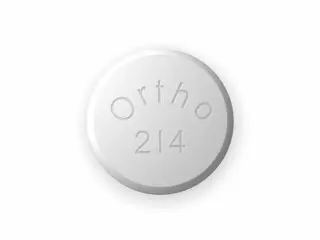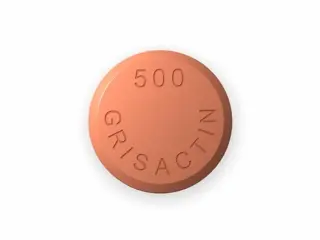Antifungal
Effective antifungal treatments to combat infections quickly and restore comfort. Shop trusted brands for creams, sprays, and oral medications designed to eliminate fungi and prevent recurrence. Fast relief and long-lasting protection available now.
Antifungal medications are essential for treating fungal infections. These infections affect skin, nails, and internal organs. Fungal infections can cause discomfort, itching, redness, and more serious health problems if untreated. Many antifungal drugs are available, each with specific uses and strengths. Below is a review of popular antifungal medications found in this category.
Diflucan (Fluconazole) is a widely used antifungal pill. It works by stopping the growth of fungus. Diflucan is effective against yeast infections, including vaginal candidiasis and oral thrush. Patients like Diflucan for its ease of use and quick action. It usually requires only one dose for simple infections. Side effects are mild but can include headache, nausea, and stomach upset. Diflucan is especially popular for treating systemic fungal infections due to its good absorption and distribution in the body.
Grifulvin and Grifulvin V (Griseofulvin) are older antifungal drugs. They are mainly used for skin and nail fungi. Griseofulvin works by interfering with fungal cell growth during cell division. Treatment with Grifulvin requires long courses, often several weeks to months. It is less fast-acting than newer drugs but remains effective. Patients usually take Grifulvin with fatty meals to enhance absorption. Side effects can include headache, dizziness, and gastrointestinal discomfort. Caution is advised for liver conditions.
Grisactin (Griseofulvin) is essentially another brand version of griseofulvin. Its properties and effects match those of Grifulvin. It targets dermatophyte infections, such as ringworm and athlete’s foot. Grisactin is favored due to its low cost and proven track record. Long-term therapy is typical for nail infections. Patients value Grisactin for helping clear persistent fungal issues that other drugs sometimes cannot cure.
Lamisil (Terbinafine) is a powerful antifungal used widely for fungal nail infections and skin fungi. It works by destroying fungal cell membranes. Lamisil has a high cure rate with shorter treatment times compared to griseofulvin. Tablets are taken once or twice daily for several weeks. Common side effects are headache, stomach upset, and rash. Lamisil is considered more effective for toenail fungus. Patients often prefer Lamisil for its convenient dosing and lasting results.
Lotrisone is a combination medication containing an antifungal and a mild steroid. It helps treat fungal infections along with inflammation and itching. Lotrisone is applied topically but may be included in oral formulations in some places. The steroid reduces redness and swelling, providing fast relief. This combination is ideal for mixed symptoms where fungus and inflammation occur together. Use should not exceed recommended time to avoid side effects from steroids.
Nizoral (Ketoconazole) is effective against many fungal infections. It was one of the first broad-spectrum antifungals available. Nizoral can be used for skin infections and systemic fungal diseases. Tablets and shampoos are its common forms. Oral Nizoral may cause liver toxicity with prolonged use. Patients should have liver function monitored if using long term. It remains popular for resistant fungal infections due to its broad action.
Sporanox (Itraconazole) is another strong antifungal drug. It treats a wide range of fungal infections, including those affecting nails, skin, and internal organs. Sporanox works by inhibiting fungal growth and replication. Treatment courses usually last several weeks. Side effects include nausea, headache, and rare liver issues. Sporanox is preferred when other antifungals fail or for tougher infections. It is valued for its effectiveness against stubborn fungal strains.
Each medication in the antifungal category has unique strengths and use cases. Diflucan is preferred for yeast-based infections due to its fast action. Grifulvin and Grisactin work well for chronic skin and nail fungi but require patience for full cure. Lamisil offers quicker results for nail infections. Lotrisone provides symptom relief in infected, inflamed skin areas. Nizoral and Sporanox are reserved for broader or more complex fungal diseases.
Choosing the right antifungal depends on the infection type and patient health status. Short courses with Diflucan or Lamisil may cure yeast and nail fungal issues quickly. Chronic or widespread infections might require Grifulvin, Sporanox, or Nizoral. Topical steroids like Lotrisone help reduce inflammation but should not be overused. Consulting a healthcare provider ensures appropriate drug selection and dosing.
Overall, the antifungal category offers effective options with diverse mechanisms. Most drugs are well-tolerated with manageable side effects. Treatment success often depends on completing the full course and maintaining hygiene. Combining medication with proper care helps prevent reinfection. Patients should watch for rare adverse effects and report any unusual symptoms to a doctor promptly.
This range of antifungal pills meets most patient needs. From mild yeast infections to severe systemic mycoses, these drugs provide reliable therapy. Diflucan, Grifulvin, Grisactin, Lamisil, Lotrisone, Nizoral, and Sporanox are trusted names with proven clinical results. With careful use, antifungal medications restore health and comfort effectively.





